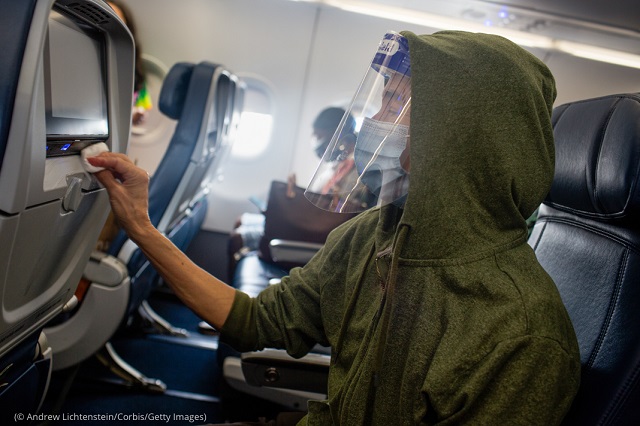The Global Innovation Index ranks the United States as the highest-spending country on research and development.
With research and development spending of more than a half-trillion dollars in a recent year, as reported by the National Science Foundation, U.S. labs have turned to the challenges posed by the new coronavirus. Private businesses do the lion’s share of research and development work, followed by academic institutions.
The University of Minnesota, the University of Colorado Boulder and Columbia University are among the schools at which scientists are studying ways to lower viral transmission indoors. For instance, they are testing the efficacy of ultraviolet light to destroy viruses without harming humans, on airplanes and in schools, hospitals and other settings.
A focus on safe travel
Qingyan “Yan” Chen, a mechanical engineering professor at Purdue University in West Lafayette, Indiana, and his colleagues have developed a personal ventilation system for airplanes that would help passengers avoid breathing others’ exhaled air.

Qingyan “Yan” Chen has developed a personal ventilation system with his colleagues at Purdue University. (Courtesy of Qingyan Chen)
Chen, an expert on how air moves and how virus particles spread in enclosed spaces, says the system supplies air from the lower part of the seat in front of a passenger to his or her breathing zone. The passenger’s exhaled air is extracted at the ceiling level because warmer air rises.
Chen and his colleagues posit that the system would limit the transmission of COVID-19 droplets to neighboring airline passengers and could also be used in buses, trains, subways, movie theaters or any space with fixed seats.
“In the future,” Chen says, “I hope that all transport vehicles are equipped with HEPA [high efficiency particulate air] filters … and UVC [ultraviolet] lights” to disinfect water, sterilize surfaces and destroy harmful microorganisms in air and in food. “Vehicles should have advanced ventilation systems that provide each passenger with clean, uncontaminated air.”
Travel tips for today
Airplanes use HEPA filters and therefore have better air quality and lower virus transmission rates than many other modes of transportation, according to Chen. But because airplane passengers sitting in the same row — and to a lesser extent within three rows — might be vulnerable to contagion from an infected person nearby, Chen has recommendations for today’s frequent flyers.
He recommends passengers wear masks and wipe down seats and seatbelts with disinfectant. And he suggests staggering the consumption of food or drink so that passengers in the same row are not removing their masks at the same time.

A passenger cleans the seatback before a flight in New York August 8. (© Andrew Lichtenstein/Corbis/Getty Images)
Banner image: A passenger boards an airplane in Houston May 24. (© David J. Phillip/AP Images)







COMMENTS0
LEAVE A COMMENT
TOP